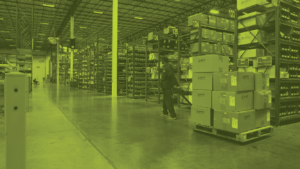Key Takeaways
- Strict adherence to regulatory standards guarantees the safety and functionality of reprocessed medical devices.
- Navigating FDA and EMA guidelines is essential for maintaining compliance and patient safety.
- Non-compliance poses significant financial penalties, operational disruptions, and risks to patient safety.
- Regular updates, training, and the integration of advanced technology are vital for efficient and compliant reverse logistics workflows.

The Stringent Steps of Reverse Logistics
Reverse logistics of medical devices is a crucial practice that extends the lifespan of equipment, lowers waste, and reduces operational costs. However, this process requires strict adherence to rigorous standards to ensure the safety and functionality of the devices.
1. Collection
- Selection Criteria: Devices are selected for reprocessing based on their material durability, design, and usage history to ensure safe and effective restoration.
- Initial Assessment: Each device is inspected for visible damage or wear that may disqualify it from reprocessing, ensuring high quality and safety standards.
2. Cleaning and Disinfection
- Decontamination Process: Technicians clean devices using validated methods that eliminate biological contamination, including mechanical cleaning, ultrasonic waves, and enzymatic detergents.
- Sterilization Standards: After cleaning, devices undergo rigorous sterilization methods, such as autoclaving or ethylene oxide, to eliminate all microbial life. These methods meet international standards, such as ISO 17665.
3. Testing and Inspection
- Functional Testing: Devices are tested to confirm they work as intended, including mechanical, electrical safety, and performance tests that mimic real-world usage.
- Safety Inspections: Each device is inspected for integrity and safety, checking for contamination, structural flaws, and other issues affecting its effectiveness.
4. Reassembly and Sterilization
- Precision Reassembly: Devices are meticulously reassembled to ensure replaced components are compatible and properly installed, following original manufacturing guidelines to maintain integrity.
- Final Sterilization: After reassembly, devices are sterilized to eliminate microbial contamination, ensuring compliance with health and safety regulations before clinical use.
5. Regulatory Validation and Packaging
- Compliance Checks: Before repackaging a device, it must pass compliance checks to ensure it meets health regulations set by the FDA, EMA, and other authorities.
- Documentation and Traceability: Each step of the reprocessing procedure, including cleaning, testing, sterilization, and any repairs or replacements, is thoroughly documented to ensure traceability.
- Secure Packaging: The devices are repackaged using health and safety-compliant materials under sterile conditions. Each package displays the reprocessing date, the extent of reprocessing, and the relevant compliance certifications for easy identification.
By following these procedures, original equipment manufacturers (OEMs) can meet regulatory requirements and maintain high standards of patient care. Ensuring the safety and functionality of medical devices is essential, though challenging. A streamlined process with thorough checks guarantees that every reprocessed device is as safe and effective as a new one.
Key Regulatory Challenges in Reverse Logistics
Navigating the regulatory landscape of medical device reverse logistics is crucial for compliance and patient safety. Key regulatory bodies like the FDA and EMA, alongside standards such as ISO 13485 and EU MDR, play significant roles in this process.
- Complexity of Compliance: Reprocessing medical devices involves complex compliance requirements. The FDA and EMA set stringent guidelines that reprocessed devices must meet to ensure safety and efficacy. Adherence to ISO 13485 fosters a robust management system, although the technical nature of these standards can strain resources and require ongoing expertise.
- Dynamic Regulatory Environment: Regulations are not static; they evolve with new medical insights and technologies. Staying updated on changes, particularly with the frequently updated EU MDR, demands constant vigilance and adaptability. Quick adjustments are necessary to avoid penalties and ensure market access.
- Sustaining Operational Efficiency: Balancing compliance with operational efficiency is challenging. Aligning processes with regulatory changes can disrupt workflows and increase costs, affecting the ability to supply safe medical devices.
Addressing these challenges requires a strategic approach, including robust quality management systems and ongoing regulatory training, to maintain compliance while preserving the integrity and efficacy of reprocessing practices.
The High Stakes of Compliance
Non-compliance in medical device reverse logistics poses severe risks, impacting operations, finances, and patient safety. Here are key reasons why adherence to regulatory standards is essential:
- Business Impact: Failure to adhere to regulations can result in significant fines for OEMs, operational disruptions, and product recalls. These issues can decrease operational efficiency, increase costs, and cause financial losses.
- Patient Safety: Non-compliance endangers patient safety. If reprocessed devices do not meet standards, they may fail, causing severe health issues and legal repercussions that can harm an OEM’s reputation.
- Regulatory Scrutiny: Non-compliance invites increased inspections and potential loss of certifications necessary for industry operation, diminishing market competitiveness and trust from partners and suppliers.
Manufacturers can mitigate these risks by implementing robust compliance processes, conducting regular audits, prioritizing patient safety, and protecting their operations and the well-being of their patients.
Effective Strategies for Navigating Regulatory Challenges
Navigating the regulatory environment of medical device reverse logistics requires a strategic approach to ensure compliance and improve operational efficiency. Medical device OEMs must implement effective strategies to maintain high standards.
1. Proactive Measures
Staying ahead of regulatory changes is essential in the medical device sector. Key actions include:
- Regular Regulatory Updates: Monitor updates to ensure compliance through news subscriptions, professional organizations, and industry conferences.
- Continual Training Programs: Implement ongoing training for staff on regulatory requirements and best practices, fostering a culture of compliance.
- Preemptive Risk Assessments: Conduct regular risk assessments to identify and address areas of non-compliance, updating Standard Operating Procedures (SOPs) as needed.
2. Early Integration
Incorporate reverse logistics considerations in design and packaging to facilitate compliance and enhance reusability.
- Material Selection: Select materials that endure multiple sterilization cycles to maintain device integrity.
- Design for Disassembly: Design products that users can easily disassemble for efficient cleaning and sterilization.
- Accessible Component Configuration: Design components for easy access to ensure thorough cleaning and compliance with health standards.
3. Technology Utilization
Leveraging technology is key to effectively managing compliance in device reprocessing. Key strategies include:
- Advanced Tracking Systems: Use RFID or barcoding to monitor devices through the reverse logistics cycle, ensuring a clear audit trail and proper execution of all steps.
- Compliance Management Software: Use specialized software to manage documentation and regulatory requirements. The software should have alert features for pending tasks and deadlines.
- Data Analytics Tools: Utilize data analytics to identify trends and predict compliance issues, allowing for proactive process adjustments in response to potential regulatory changes.
Medical device OEMs can enhance operational efficiency and reduce non-compliance risks by proactively addressing regulatory requirements, leveraging appropriate technologies, and incorporating reverse logistics considerations early in design. These strategies ensure compliance with current regulations and prepare OEMs for future changes, supporting market leadership and patient safety.

How Millstone Helps
At Millstone Medical Outsourcing, we specialize in navigating the complexities of medical device reverse logistics. With our extensive industry knowledge and technical expertise, we offer a comprehensive suite of services designed to ensure compliance, improve operational efficiency, and reduce costs for medical device OEMs.
Expert Regulatory Guidance
Our specialists stay current with global regulatory changes and best practices. We provide guidance and support to ensure your reverse logistics meets all FDA, EMA, ISO standards, and EU MDR requirements, protecting you against non-compliance risks.
Advanced Technological Solutions
Millstone utilizes cutting-edge technology to enhance the traceability and management of reprocessed devices. Our systems seamlessly integrate with your operations, providing real-time monitoring and compliance checks that streamline workflows and minimize errors.
Customized Reverse Logistics Protocols
We develop and implement reverse logistics protocols tailored to your devices’ needs. This process includes incorporating reverse logistics considerations early in the design and packaging phases to facilitate future compliance and enhance reusability. Our unique approach, which provides for in-house tier-one vertical solutions, covers everything from selecting suitable cleaning agents and methods to defining rigorous testing procedures and ensuring that reassembly meets the original manufacturing specifications.
Quality and Efficiency
Our state-of-the-art facilities can manage high volumes of reprocessing while maintaining the highest quality standards. We optimize every process step to reduce turnaround times and costs, ensuring that each device meets or exceeds its original performance criteria.
The Millstone Difference
In conclusion, Millstone’s integrated approach to medical device reverse logistics helps OEMs comply with stringent regulatory standards and promotes operational excellence and sustainability. By partnering with Millstone, you can ensure that your reverse logistics practices are compliant, cost-effective, and efficient. Our commitment to quality and customer satisfaction makes us the preferred choice for OEMs seeking to enhance their competitive edge while upholding the highest patient safety standards.







